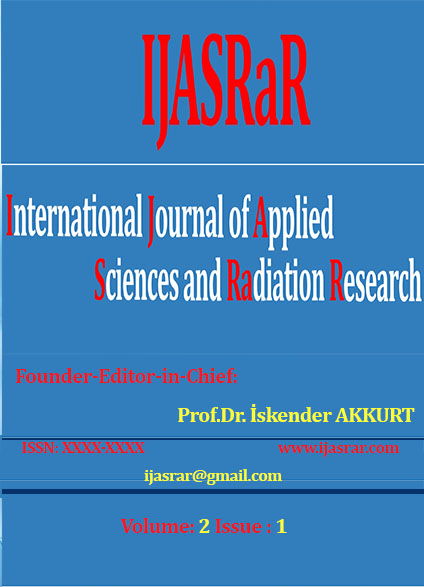Optimization in the Geometric Design of Solar Collectors Using Generative AI Models (GANs)
DOI:
https://doi.org/10.22399/ijasrar.32Keywords:
Generative AI, Solar thermal collector, Design optimization, Thermal efficiencyAbstract
This scientific article aims to develop a model based on generative artificial intelligence for the optimization of the geometric design of solar thermal collectors, with the goal of maximizing their thermal efficiency in residential and industrial applications. A methodological approach is followed, which employs generative neural networks to explore the design space of the collectors, producing a variety of novel and improved configurations. Through simulations, the performance of each design is evaluated in terms of efficiency, considering parameters such as collector area, geometric enhancements (e.g., reflectors or selective covers), and solar radiation conditions.The results demonstrate that the generative model is capable of increasing the thermal efficiency of collectors compared to baseline designs, identifying optimal configurations with efficiencies close to 75%. Simulated data graphs and tables are included, along with a flow diagram of the proposed process and pseudocode of the optimization algorithm.The literature review covers previous optimization techniques (heuristics, machine learning) and fundamentals of generative AI (GANs, transformers, diffusion models), justifying the choice of the technique used. The proposed generative approach proves to be a promising tool for the automated design of solar thermal collectors, capable of enhancing energy performance and providing innovative solutions in solar engineering.
References
[1] E. Vengadesan y R. Senthil. (2020). A review on recent developments in thermal performance enhancement methods of flat plate solar aircollector. Renewable and Sustainable Energy Reviews, vol. 134, p. 110315, 2020. https://doi.org/10.1016/j.rser.2020.110315 DOI: https://doi.org/10.1016/j.rser.2020.110315
[2]M. S. El-Sebaey, S. M. Mousav, R. Sathyamurthy,H. Panchal y F. Essa. (2024). A detailed review of various design and operating parameters affecting the thermal performance augmentation of flat-plate solar collectors. International Journal of Ambient Energy, vol. 45, nº 1. https://doi.org/10.1080/01430750.2024.2351100 DOI: https://doi.org/10.1080/01430750.2024.2351100
[3] R. Chitharaj, H. Perumal, M. Almeshaal y P. Manoj Kumar. (2025). Optimizing Performance of a Solar Flat Plate Collector for Sustainable Operation Using Box–Behnken Design (BBD). Sustainability, vol.17, nº 2, p. 461. https://doi.org/10.3390/su17020461 DOI: https://doi.org/10.3390/su17020461
[4]Siddhartha, Sharma, Naveen y Varun. (2012). A particle swarm optimization algorithm for optimization of thermal performance of a smooth flat plate solar air heater,» Energy Elsevier, vol. 38, nº 1, pp. 406-413, 2012. https://doi.org/10.1016/j.energy.2011.11.026 DOI: https://doi.org/10.1016/j.energy.2011.11.026
[5] O. May, L. J. Ricalde, B. Ali, E. Ordoñez Lopez, E. Venegas Reyes y O. A. Jaramillo. (2016). Neural Network Inverse Modeling for Optimization. InTech. doi: 10.5772/63678 DOI: https://doi.org/10.5772/63678
[6] B. Ajay, S. R. A. Pydi Venkata y K. K. Yudu Eswar Vinay. (2023). The Power of Generative AI: A Review of Requirements, Models, Input–Output Formats, Evaluation Metrics, and Challenges. Future Internet, vol. 15, nº https://doi.org/10.3390/fi15080260 DOI: https://doi.org/10.3390/fi15080260
[7] R. Anil Patil, V. Wankhede y B. Patil. (2024). A Comparative Study of Generative AI Models. International Journal for Research in Applied Science & Engineering Technology. https://doi.org/10.22214/ijraset.2024.64652 DOI: https://doi.org/10.22214/ijraset.2024.64652
[8] L. M. Cousins. (2025). Generative AI impact: Energy optimization processes & design. Sustainability Directory.
[9] J. Jiang, M. Chen y J. A. Fan. (2020). Deep neural networks for the evaluation and design of photonic devices. Nature Reviews Materials, vol. 6, pp. 679- 700. https://doi.org/10.1038/s41578-020-00260-1 DOI: https://doi.org/10.1038/s41578-020-00260-1
[10] E. Bellos y C. Tzivanidis, «A detailed investigation of an evacuated flat plate solar collector. (2023). Applied Thermal Engineering, vol. 234, p. 121334. https://doi.org/10.1016/j.applthermaleng.2023.121 334 DOI: https://doi.org/10.1016/j.applthermaleng.2023.121334
[11] V. Goel, V. S. Hans, S. Singh, R. Kumar, S. Parhak y R. Saini. (2021). A comprehensive study on the progressive development and applications of solar air heaters. Solar Energy, vol. 229, pp. 112-147. https://doi.org/10.1016/j.solener.2021.07.040 DOI: https://doi.org/10.1016/j.solener.2021.07.040
[12] C. Avila y E. Rivera. (2024). Thermodynamics- Informed Neural Networks for the Design of Solar Collectors: An Application on Water Heating in the Highland Areas of the Andes. Energies, vol. 17, nº 19, p. 4978. https://doi.org/10.3390/en17194978 DOI: https://doi.org/10.3390/en17194978
[13]T. Alam, N. Balam, K. Kulkarni y R. Cozzolino. (2021). Performance Augmentation of the Flat Plate Solar Thermal Collector: A Review. Energies, vol. 14, nº 20, p. 6203.https://doi.org/10.3390/en14196203 DOI: https://doi.org/10.3390/en14196203
[14]N. Abed y I. Afgan. (2020). An extensive review of various technologies for enhancing the thermal and optical performances of parabolic trough collectors.International Journal of Energy Research. https://doi.org/10.1002/er.5271 DOI: https://doi.org/10.1002/er.5271
[15] I. Arias, E. Zarza, L. Valenzuela, M. Pérez-García, J. A. Romero Ramos y R. Escobar. (2021). Modeling and Hourly Time-Scale Characterization of the Main Energy Parameters of Parabolic-Trough Solar Thermal Power Plants Using a Simplified Quasi-Dynamic Model. Energies, vol. 14, nº 1, p. 221, 2021. https://doi.org/10.3390/en14010221 DOI: https://doi.org/10.3390/en14010221
[16]S. Pathak, T. Tazmeen, K. Chopra, V. Tyagi y A. Pandaey. (2023). Sustainable Energy Progress via Integration of Thermal Energy Storage and Other Performance Enhancement Strategies in FPCs: A Synergistic Review. Sustainability, vol. 15, nº 17, p. 13749. https://doi.org/10.3390/su151813749 DOI: https://doi.org/10.3390/su151813749
[17]A. Remlaoui, D. Nehari, B. Kada y S. Hussain. (2024). Numerical simulation of a forced circulation solar water heating system. Scientific Reports, vol. 14, p. 28999. https://doi.org/10.1038/s41598-024-80576-y DOI: https://doi.org/10.1038/s41598-024-80576-y
[18]H. Hassan, O. Osman, M. Abdelmoez y S. Abo- Elfadl. (2023). Experimental Assessment of a Novel Designed Solar Hot Water Storage Collector Incorporating an Array of Partitioned Ducts Absorber. Solar Energy, vol. 262, p. 111838. https://doi.org/10.1016/j.solener.2023.111838 DOI: https://doi.org/10.1016/j.solener.2023.111838
[19]C. Ramesh, M. Vijayakumar, G. Navaneethakrishnan y H. Panchal, «Ramesh, C., Vijayakumar, M., Navaneethakrishnan, G., … Panchal, H. (2022). Performance Enhancement of Selective Layer Coated on Solar Absorber Panel with Reflector for Water Heater by Response Surface Method: A Case Study. Case Studies in Thermal Engineering, vol. 36, p. 102093. https://doi.org/10.1016/j.csite.2022.102093 DOI: https://doi.org/10.1016/j.csite.2022.102093
[20]M. J. Prakasam, P. Murugesan, M. Pasupathi y V. Murugesan. (2024). Investigating the Performance of a Flat-plate Solar Water-heating System using CeO₂/Water Nanofluid: A Holistic Approach. Journal of Enhanced Heat Transfer, vol. 31, nº 1, pp. 47-72. DOI: 10.1615/JEnhHeatTransf.2023048767 DOI: https://doi.org/10.1615/JEnhHeatTransf.2023048767
Downloads
Published
How to Cite
Issue
Section
License
Copyright (c) 2025 International Journal of Applied Sciences and Radiation Research

This work is licensed under a Creative Commons Attribution 4.0 International License.


